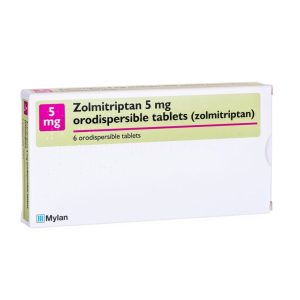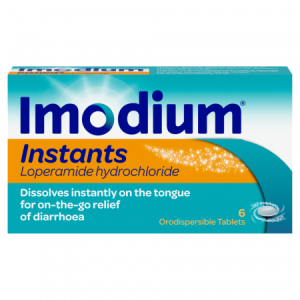Cilest Pills (replaced by Cilque or Lizinna contraceptive pills)
Safe and Secure
- Safe & Discreet Available 24/7
- Fully inspected and regulated service
The Cilest Pill was discontinued in July 2019 after the manufacture of the drug announced they would no longer be making it. However,there are two alternatives to Cilest available at My Chemist Plus.
Cilest Pill Alternatives
Cilque and Lizanna both contain the same active ingredients estrogen and progesterone as Cilest so will work in the same way.
Cilest Contraceptive Pill
is a prescription medicine used for the prevention of becoming pregnant and contains two types of female sex hormones- oestrogen and progestogen. These hormones contained can stop a pregnancy from happening. They can also, in some circumstances, be used to help ease troublesome symptoms in some women who suffer from painful, heavy or irregular bleeding.
Is Cilest The Same as Cilique
Whilst it might cause some worry to have to change your contraceptive pill, changing from Cilest should not cause any problems as Cilique is the same pill, albeit with a different manufacturer. It contains the same ingredients as Cilest and is safe to use straight after you have finished the last Cilest pill in your packet. In addition to Cilique, there is another pill called Lizinna that replaced Cilest when the manufactures decided to stop making it.
Cilest Side Effects
As with any medication side effects can occur when taking Cilest but these do not affect everyone. If you experience any of the side effects, or these become severe or persistent, please consult your doctor.
Common side effects include:
- Headache
- Stomach problems such as nausea, vomiting and diarrhoea
- Bleeding and spotting between your periods
- Swollen hands, ankles or feet
- Depression or trouble sleeping
- Acne or a rash
If you experience any serious Cilest Side Effects such as signs of:
- A heart attack or stroke
- A blood Clot
- Breast Cancer
- Severe liver problems
- Allergic reaction
You must contact your GP or ring NHS 111 for advice straight away.
For a full list of side effects see the Cilest Pill Leaflet
Can You Get Pregnant on Cilest Pill?
As with most contraceptive medications there is a chance of getting pregnant however the likelihood is low as Cilest can be over 99% effective when used correctly.
Cilest Missed Pill
If you miss a pill or begin taking this late, it can cause the pill to become less effective at preventing a pregnancy. The chances of pregnancy after missing a pill or pills will depend on when the pills are missed and how many are missed.
When you miss the Cilest pill you should take this as soon as you remember to, even if this results in two pills being taken in one day. If 12 hours or more has passed without taking a pill you would need an additional method of contraception (such as condoms) for the next 7 days.
Please read the Cilest Pill Leaflet for more detailed information on Cilest Missed Pill.
Cilest Pill and Acne
Acne can a factor of some contraceptive pills such as the progesterone only pill, as it can make skin produce more oil and create further acne for women who are already prone to spots.
On the other hand, combine contraceptive pills such as Cilest help improve skin for those who suffer from acne. This is caused by the combination of oestrogen and progesterone which helps alleviate hormone levels and reducing androgen activity which creates stability for breakouts.
Please note that if you suffer from acne and you are taking Cilest, you should always consult your doctor with any concerns that you have prior to beginning treatment.
Cilest Pill and Weight Gain
As with many female contraceptive pills weight gain may be a cause of concern however there is no evidence to suggest that Cilest will contribute to an increase in weight.
Please see more information on the Cilest Pill and Weight Gain.
Cilest Pill Leaflet
The Cilest Pill Leaflet has all the important information you may need but if you need any further information at all please feel free to give us a call, we are always happy to assist.
Cilest Alternatives
The most commonly used alternatives to Cilest which are available at My Chemist Plusinclude:
- Cilque
You can view a full list of Cilest Alternatives and other female contraceptive medications that we offer at My Chemist PlusHere.
Combined Oral Contraceptive
The combined pill is another term for the pill, with the combined pill containing two artificial versions of the female hormones oestrogen and progesterone which are produced naturally in the ovaries. The combined pill as a prevention of becoming pregnant is effective by 99%.
The recommended way to use the pill is to take one every day for 21 days then have a break for 7 days, during which time you should have a period. After 7 days you begin to take the pill again.
It is advised to take the pill at the same time every day to form a routine, otherwise there is a risk of pregnancy, particularly if you miss a pill or vomit or have severe diarrhoea.
Please note that some medicines can affect the efficiency of the pill so you should consult your doctor before taking any other tablets.
If you suffer from heavy or painful periods, PMS (premenstrual syndrome) or endometriosis the combined pill can be an effective medication to help ease your symptoms.
Please note that the pill does not protect against sexually transmitted infections (STIs) so you would require a condom to protect against this.
How the combined pill works
- It prevents the ovaries from releasing an egg each month (ovulation)
- It thickens the mucus in the neck of the womb, so it is harder for sperm to penetrate the womb and reach an egg
- It thins the lining of the womb, so there is less chance of a fertilised egg implanting into the womb and being able to grow
There are a variety of brands of pill- these are made up of three main types:
Monophasic 21-day pills
The most common type of pill which has the same amount of hormone in it. One pill is taken every day for 21 days and then a break of 7 days. Microgynon, Marvelon, Yasmin and Cilest are all examples of this type of pill.
Phasic 21-day pills
Phasic pills contain two to three sections of different coloured pills within a pack with each section containing a different level of hormones. One pill is taken every day for 21 days and then a break of 7 days. It is important that Phasic pills are taken in the right order. Logynon is an example of this type of pill.
Every day (ED) pills
With ED pills there are 21 active pills and 7 inactive (dummy) pills within each pack. The two types of pills have a different appearance with one pill taken every day for 28 days with no break between the packets. It is important that the every day pills are taken in the right order. Microgynon ED is an example of this type of pill.
Please ensure that you follow the instructions that come with your packet. If you have any questions you should consult your GP, practice nurse or pharmacist.
What to do if you miss a pill through sickness
If you miss a pill due to being sick, you should use another form of contraception until you have taken the pill again for 7 days without vomiting
Who can use the combined pill
If there are medical restrictions why you can not take the pill and you are a non-smoker, you can take the pill until the menopause. However, the pill is not the most suitable method of contraception, so you should consult your doctor, nurse or pharmacist to see if this is right for you.
You should not take the pill if you:
- are pregnant
- smoke and are 35 or older
- stopped smoking less than a year ago and are 35 or older
- are very overweight
- take certain medicines (ask your GP or a health professional at a contraception clinic about this)
You should also not take the pill if you have (or have had):
- thrombosis (a blood clot) in a vein, for example in your leg or lungs
- a stroke or any other disease that narrows the arteries
- anyone in your close family having a blood clot under the age of 45
- a heart abnormality or heart disease, including high blood pressure
- severe migraines, especially with aura (warning symptoms)
- breast cancer
- disease of the gallbladder or liver
- diabetes with complications or diabetes for the past 20 years
Risks of taking the combined pill
There are some risks associated with the combined contraceptive pill however these are minimal and for most women, the benefits the pill can provide outweigh the risks.
These risks include:
- Blood clots- The oestrogen in the pill may cause your blood to clot more readily. If a blood clot develops, it could cause deep vein thrombosis (clot in your leg) or pulmonary embolus (clot in your lung)
- stroke
- heart attack
The chances of developing a blood clot is very minimal but your doctor will check if you have certain factors that could put you at risk before they prescribe the pill.
The pill can still be taken with caution if you are identified with a risk factor but is unlikely to be prescribed if you have two or more risk factors
These include:
- being 35 years old or over
- being a smoker or having quit smoking in the past year
- being very overweight (in women with a BMI of 35 or over, the risks of using the pill usually outweigh the benefits)
- having migraines (you should not take the pill if you have severe or regular migraine attacks, especially if you get aura or a warning sign before an attack)
- having high blood pressure
- having had a blood clot or stroke in the past
- having a close relative who had a blood clot when they were younger than 45
- being immobile for a long time – for example, in a wheelchair or with a leg in plaster
- Cancer
There is ongoing research between the link to breast cancer and the pill, it is suggested that users of all types of hormonal contraception have a slightly higher chance of being diagnosed with breast cancer compared to those that don’t use them. However, 10 years after you stop taking the pill, your risk of breast cancer goes back to normal.
Research has also suggested a link between the pill and the risk of developing cervical cancer and a rare form of liver cancer. However, the pill does offer some protection against developing womb (endometrial) cancer, ovarian cancer and colon cancer.






